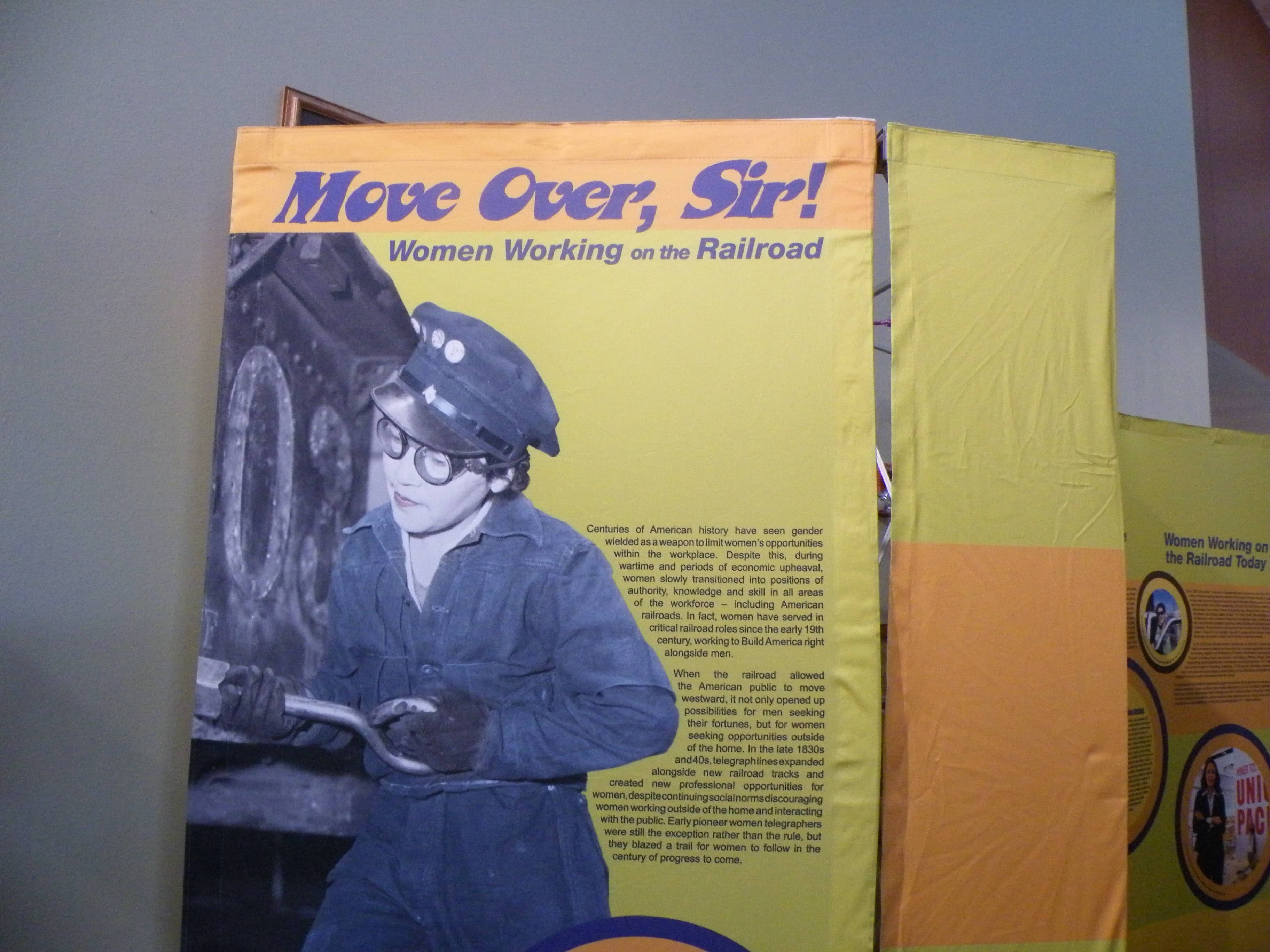
“Move Over, Sir”, an exhibit about women in the railroad industry, is currently on display at the Lehnis Railroad Museum in Brownwood.
The exhibit chronicles the history of women “working on the railroad, all the live-long day,” as the song goes. In the early days of the railroad, the work was very hazardous, and very few women were employed in the industry. As time went on, though, society changed, and it became more acceptable for women to work in industrial jobs.
The biggest factor for change, as it often is, was war. During the Civil War in the 1860’s most of the young men were in the Army. As many as 100,000 women worked for railroads during the war, many as telegraphers. In World War One a similar number of women, about 100,000, found jobs with the railroad. In each case, when the war ended, the men came home and took their jobs back, forcing the women to find other employment.
During World War 2 in the 1940’s the railroads employed up to 250,000 women. Again, at the war’s end, many men returned and got their job at the railroad back. But this time society was changing, and not as many women lost their job. Throughout the 1950’s, -60’s, -70’s, and on to today, the female workforce in the railroad industry has grown and become more normal.
The exhibit features several women pioneers in the railroad industry, including Elizabeth Cogley, who became the first railroad telegrapher in 1855.
Avis Lobdell, who in 1935 was named head of the Union Pacific’s Women’s Travel Department, and created the company’s nurse and stewardess program.
Edwina Justus, who in 1976 became Union Pacific’s first Black female engineer.
The “Move Over, Sir” exhibit will be on display through September 15. For more information call 325-643-6376. The Lehnis Railroad Museum is located at 700 East Adams St. in Brownwood, and is open 10:00 a.m. through 4:00 p.m., Tuesday through Saturday.